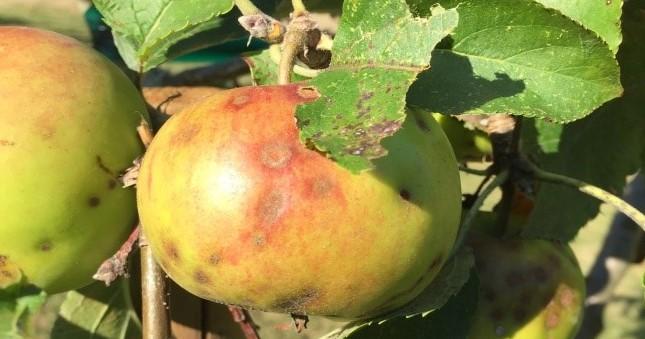by Vancouver Island Master Gardeners Association
Apple and pear scab are caused by different fungi, but their symptoms and management are similar. Apple and pear scab overwinters primarily in fallen leaves and in the soil. Fungus development is favored by wet, cool weather that generally occurs in spring and early summer. Fungal spores are carried by wind, rain or splashing water from the ground to flowers, leaves or fruit. During damp or rainy periods, newly opening apple leaves are extremely susceptible to infection. The longer the leaves remain wet, the more severe the infection will be. Apple scab spreads rapidly between 55-75 degrees F.

There are several techniques you can use to avoid apple scab in apples and pears.
Purchase resistant trees and avoid highly susceptible cultivars.
Do what you can to keep moisture on trees to a minimum. Infection can occur with as little as 6 to 9 hours of leaf wetness at optimum temperatures. Keep trees pruned to provide good air movement so that foliage can dry more quickly. Fruit trees should be located in areas of the home landscape that receive plenty of sun. Avoid planting fruit trees next to homes, hedges, and fences that not only restrict air movement, but also provide excess shade and inhibit quick leaf drying conditions.
Remove fallen leaves from the base of apple and pear trees. You can achieve good control of scab by simply removing the fallen leaves from under the apple and pear trees. Leaves may be safely composted away from apple and pear trees. You can also use a mulching lawn mower on fallen leaves, going over them multiple times. The goal is to chop the leaves up into very small pieces in order to hasten decomposition so the fungus cannot successfully overwinter on leaves and release spores in the spring.
Spread a 3-to 6 inch layer of compost under trees, keeping it away from the trunk, to cover soil and prevent splash dispersal of the fungal spores.
Practicing these techniques for your apple and pear trees may not eliminate scab, but they are good methods to help prevent scab from taking over your trees

